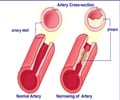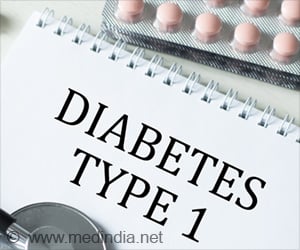Fat deposits on chest and back increase the risk of insulin resistance which leads to type2 diabetes.
Fat deposits on chest and back increase the risk of insulin resistance which leads to type2 diabetes. It is for the first time that such an association is made between the two and it was seen to be strong both in HIV infected subjects and HIV negative control subjects in the Study of Fat Redistribution and Metabolic Change in HIV Infection (FRAM). The researchers from the San Francisco VA Medical Center (SFVAMC) conducted a national long-term longitudinal study of HIV infected people taking modern antiretroviral therapy and HIV negative controls.
The presence of visceral fat, which is located between and around the internal organs, was also associated with an increased risk of insulin resistance in both populations. The researchers found that each type of fat contributes independently to insulin resistance whether or not the other type is present.The study appears in online Publish Ahead of Print section (http://www.jaids.com/pt/re/jaids/paptoc.htm) of the Journal of Acquired Immune Deficiency Syndromes.
“We knew about the insulin resistance risk associated with visceral fat, which has been shown in previous studies, but no one had ever looked at the contribution of upper trunk fat,” says lead author and FRAM principal investigator Carl Grunfeld, MD, PhD, chief of the metabolism and endocrine sections at SFVAMC. “Strikingly, there was very little difference between HIV infected people and controls. If you have fat up top, it’s bad for you.”
In insulin resistance, cells in the body become increasingly resistant to the action of insulin, a hormone that regulates blood glucose levels. The result is chronically high blood glucose, which has many adverse health effects.
The researchers measured visceral and subcutaneous fat deposits in the legs, arms, upper trunk, and lower trunk of 926 HIV infected subjects and 258 HIV negative controls. They divided each population into tertiles, or thirds, based on the amount of fat in each location. Among the HIV infected subjects in the highest tertile of upper trunk fat, 57 percent showed insulin resistance; of those, half lacked high visceral fat. Among the highest tertile of controls with upper trunk fat, 61 percent were insulin resistant. A third of that group did not have high visceral fat.
“So, basically, there are people who have a lot of fat in their upper trunk and not so much inside their belly, yet they are at risk for insulin resistance,” observes Grunfeld, who is also a professor of medicine at the University of California, San Francisco (UCSF). “And there are people with a lot of visceral fat but not upper trunk fat who are in the same boat. But if you’ve got both, it’s a double whammy. Your risk of insulin resistance is quite high.”
Grunfeld explains the lack of difference in risk between HIV infected and HIV negative subjects by noting that two thirds of all Americans are overweight and one third are obese. “With the new, highly effective antiretroviral medications, Americans with HIV now have the same weight problems as everybody else,” he says. “No matter who you are, if you eat too much and you don’t exercise, you’re going to be at risk for insulin resistance, cardiovascular disease, and every other problem associated with being overweight.”
Source-Eurekalert
BIN/B
 MEDINDIA
MEDINDIA
 Email
Email










